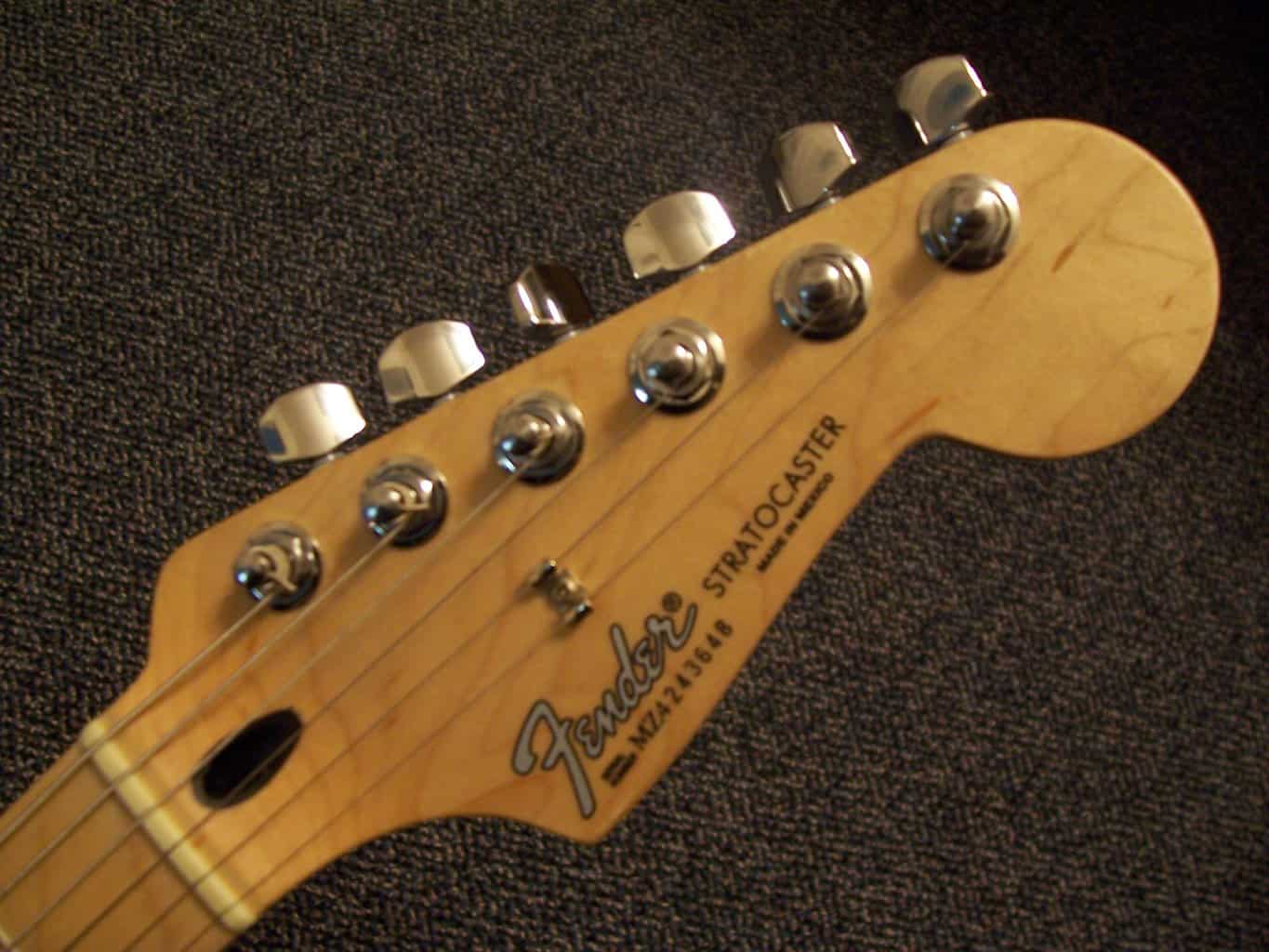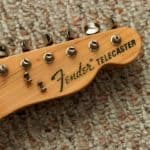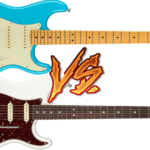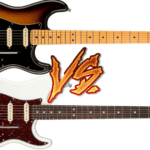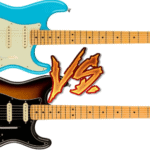Guitars that constantly go out of tune can really get the worst out of yourself.
Luckily there are things to do about it, and although the problem is not always with the tuners, a nice set of locking tuners will surely make your life easier in many aspects.
If you just want to know what my recommendations about this matter are, I’ll leave them up here for you.
My top 3 picks for the best locking tuners for a Stratocaster are:
- Gotoh Vintage Locking Tuners
- Fender Locking Tuners
- Graph Tech Ratio
If you want to read a bit more on the topic, in this article I will tell you all I know about locking tuners, and why I consider they are a great upgrade to your Stratocaster.
I will give you more detail about my recommendations, and some tips about how to improve your guitar’s tuning stability.
Are you ready to get started?
Let’s get to it!
What are locking tuners?
Before we get started, it is important to make sure we are talking about the same thing.
Locking tuners are guitar machine heads that have the extra functionality of applying pressure to lock the string in place. Generally, they have a screw or thumb screw to fasten the string in position. This prevents it from moving and modifying its tension, making for better tuning stability.
Do Fender or Squier guitars have locking tuners?
Fender and Squier guitars don’t usually come with locking tuners unless we are talking about a very specific new model or custom shop unit. They come equipped with very good tuners, but they don’t have the capability of locking the string in place.
A set of locking tuners would surely be a nice upgrade for any of these guitars.
The 3 best locking tuners for a Stratocaster
When choosing locking tuners, the things I value the most are quality, brand recognition, and aesthetics.
Luckily, all the most well-known guitar accessories brands have very good locking machine heads in their product line.
In the specific case of Stratocasters, I decided upon the following 3 models of locking tuners, however, this list is not final and there are many other great options outside of it.
Gotoh Vintage Locking Tuners
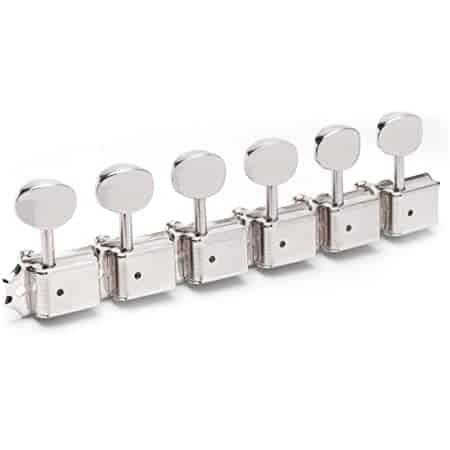
Gotoh is THE brand for locking tuners. They have been making them forever.
If you are looking for a rock-solid set of Kluson-style locking tuners, these will surely meet your expectations.
They are designed with Fender-style guitars in mind, so compatibility won’t be an issue.
I picked these ones because their aesthetic is on point, and they also check every other box in the required feature list.
Although these don’t come with a universal mounting plate, their installation should be pretty easy on any strat with the usual specs.
Fender Locking Tuners
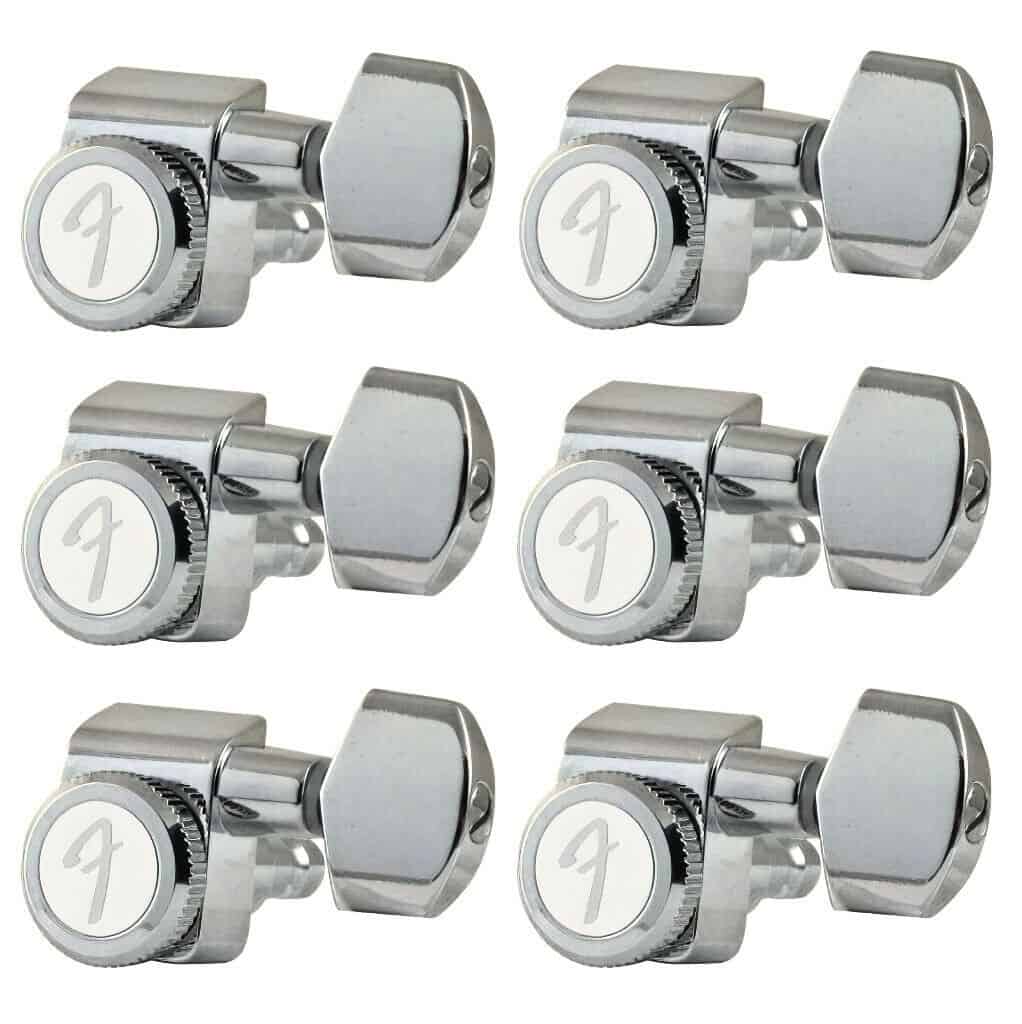
Why not go with Fender parts if you have a Fender guitar?
Even if your Strat is not a Fender, their locking tuners are as good as any other.
Be careful, though, these won’t fit any American Vintage instruments. That’s clearly stated on their product page.
I chose to put these second because their aesthetic is a bit more modern, and I’m more of a vintage guy.
However, if this is not something that worries you, I don’t see any reason to not pick these ones.
Graph Tech Ratio
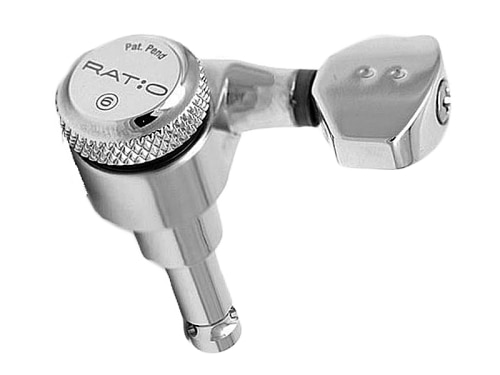
The Graph Tech Ratio machine heads are the most expensive on this list, but also the higher quality ones.
Does that really matter? Well, I’m not sure, but you won’t go wrong with these ones.
Their name is inspired by the mechanism inside them that allows every single machine to have the perfect ratio to let every string respond the same to any tuning adjustment.
This results in one turn being around a whole tone modification on all strings.
Another big selling point of this set is that they come with a universal mounting plate set that will surely fit any acoustic guitar.
Take into consideration that many locking tuners are mainly marketed for electric guitars, so compatibility might be a concern in some cases.
How to install locking tuners on a Stratocaster?
What does 6 inline mean for locking tuners?
6 inline for locking tuners or any other kind of tuners, in general, refers to the layout in which they are presented on the guitar. The majority of Fender guitars have 6 machines inline on their headstock, so do many guitars from other brands.
Other kinds of guitars, and perhaps some acoustics will require 3+3 layout tuners, which means that they are arranged on a set of 3 for each side of the headstock.
There are other kinds of less common layouts, but knowing that the + sign separates the quantity on each side, you will now be able to interpret them.
What else can I do to improve my Stratocaster’s tuning stability?
As I said at the beginning of this article, there are many things on your guitar that could affect its tuning stability.
Many players wrongly blame everything on the tuners, but if the problems persist even after the upgrade, you must check some of these other possibilities.
Also, you should check them before getting the locking tuners because maybe you could solve your issues without spending money on the upgrade.
Here are some things you could do to improve your Stratocaster’s tuning stability:
Don’t use old strings
Old guitar strings will start having intonation problems. This might make them sound in tune on a certain part of the fretboard, but way off on another. You might think that it’s a setup problem or that your tuners are failing, but the solution might be just getting a new set of strings.
Try out lower gauge strings
In some rare cases, you might be using a string gauge too thick for your nut’s socket. The string will not be able to be in full contact with the entirety of the receptacle and then be more prone to moving when played. In this case, a lower gauge will sit more deeply into the nut, at the intended position.
Set up your guitar properly
As with old strings, a bad setup on your guitar will make intonation a nightmare. When the tuning is not consistent across the fretboard, the most 2 most likely issues will be old strings and a lack of a proper setup.
Luckily this is an easy fix for any experimented guitar technician, and there surely is one in your local guitar shop.
Lubricate your guitar’s nut
The nut is one of the main points of tuning problems in a guitar. The thing is that when the string moves, it might get stuck on its socket and not return to its original position, generating tension in one side of the other.
One way to attenuate this issue is by lubricating each socket when you restring your guitar. There are specific lubricants for this, but you can also use some graphite from a pencil tip. Just rub it generously on the socket and then blow to take away any excessively big chunks of it.
Get your nut replaced for a higher quality one
In some cases, the nut itself is the problem and there’s no amount of lubrication that could solve it.
Higher quality nuts are designed to prevent the strings from getting trapped and are made of more slippery materials than the stock ones of affordable guitars.
Do locking tuners affect tone?
Locking tuners do not affect the tone of a guitar. However, they add mass to the headstock since they tend to be heavier than normal tuners. This additional weight could influence feel. Changes in tone will be due to the difference in feel or because of the confidence that the guitar will stay in tune.
Many players argue that headstock mass makes an impact on tone, and they discuss things such as Suhr headstocks making a guitar sound different than the original Fender strat one.
It might be true, but only to the ears that could perceive it. For all mortals, it’s just a matter of taste and feel.
Can you use drop tunings with locking tuners?
You can use drop tunings with locking tuners since they just hold the string in place at the machine level. You can tune or detune your string normally as you would with a stock set of tuners.
Locking tuners do not limit you in any way, that’s what makes them a very harmless upgrade.
Do I need a locking nut with locking tuners?
You don’t need a locking nut to install locking tuners. Actually, both things accomplish the same purpose of making tuning more stable. The thing is that if you install a locking nut and fasten it, your locking machine heads would stop working since the string tension would be locked at the nut level.
Locking nuts usually come with floating bridges such as the Floyd Rose. They are usually complemented with micro tuners, or precision tuners installed on the bridge of the guitar.
3 things to consider before deciding on locking tuners for your Stratocaster
Upgrading your guitar tuners is not really a big deal, but as with everything as personal as modifying a guitar, you should consider some things before pulling the trigger.
Here are the 3 things to consider before putting locking tuners on your Stratocaster:
Are the locking tuners compatible with your Stratocaster?
The first thing you have to check for is if the layout is correct. Most strats will have a 6 inline layout, as I mentioned earlier.
The next thing to take into account is if the locking tuner set comes with a universal mounting plate. This will prevent you from having to drill new holes into your headstock if the screw layout of the new tuners doesn’t exactly match with your previous ones.
Besides these things, there’s nothing else to worry about.
Are the locking tuners of a higher quality than your actual tuners?
This will depend, most probably, on the quality of your instrument if you have stock tuners. In most cases, any set of aftermarket tuners will be on par or better than the ones that came factory installed on your instrument.
In some rare situations, if you have a very expensive instrument, the machine heads might be of super high quality and it could be a shame to replace them.
But this is just a personal choice and I will leave it up to you.
Are the locking tuners within your budget?
A decent set of locking tuners will start from around $50, or maybe a bit less than that. You can go higher in price too.
Locking tuners are not a really expensive mod for a guitar really, but it will depend on your instrument’s price to really tell if they are worth it.
In most cases they are.
3 reasons to upgrade your Stratocaster with locking tuners
As I suggested throughout this article, there are not many drawbacks when installing locking tuners on a guitar, other than the monetary cost of purchasing them.
Here are my 3 reasons why you should upgrade your Stratocaster guitar with locking tuners:
It’s an easy DIY upgrade
As you could have seen in the video above, the upgrade is pretty straight forward and you wouldn’t need a guitar technician to do it for you. Just by following the instructions or even your common sense, and with a few very common tools, you could install the locking machine heads in just fifteen minutes.
Locking tuners will improve tuning stability
That’s what they are designed to do. Your tuning problems might come from other parts of your guitar, as I suggested above, but any addition to your tuning quest will be productive. In the cases where the problem is not anywhere else, locking tuners will be an amazing upgrade.
Locking tuners make restringing quicker and easier
Many players choose locking tuners for just this small feature. Restringing with them is a way easier task. You just pass the string through the machine’s hole, fasten the screw or tighten the mechanism and then cut the excess string on the other side. And you are done!

Hello there, my name is Ramiro and I’ve been playing guitar for almost 20 years. I’m obsessed with everything gear-related and I thought it might be worth sharing it. From guitars, pedals, amps, and synths to studio gear and production tips, I hope you find what I post here useful, and I’ll try my best to keep it entertaining also.

